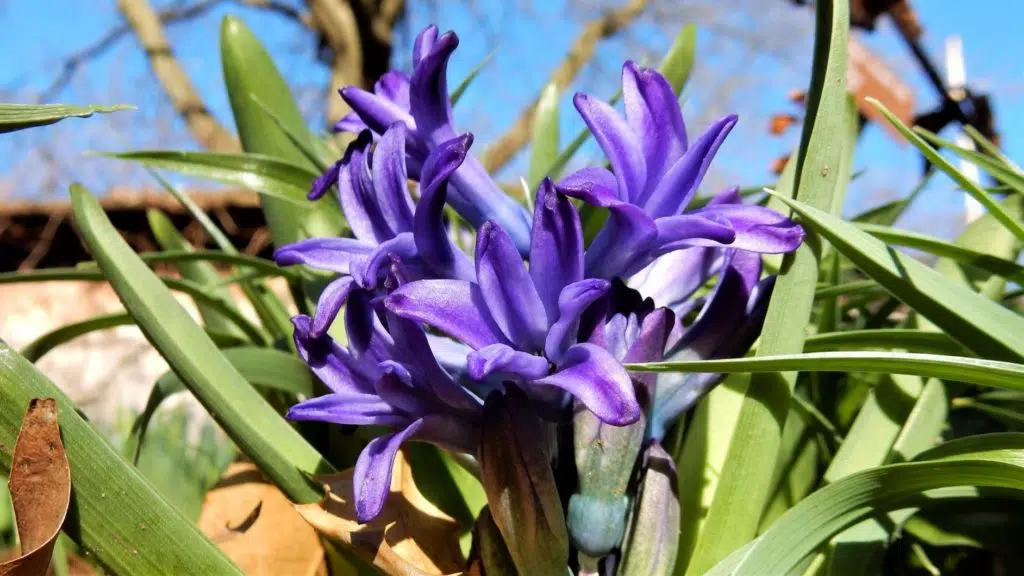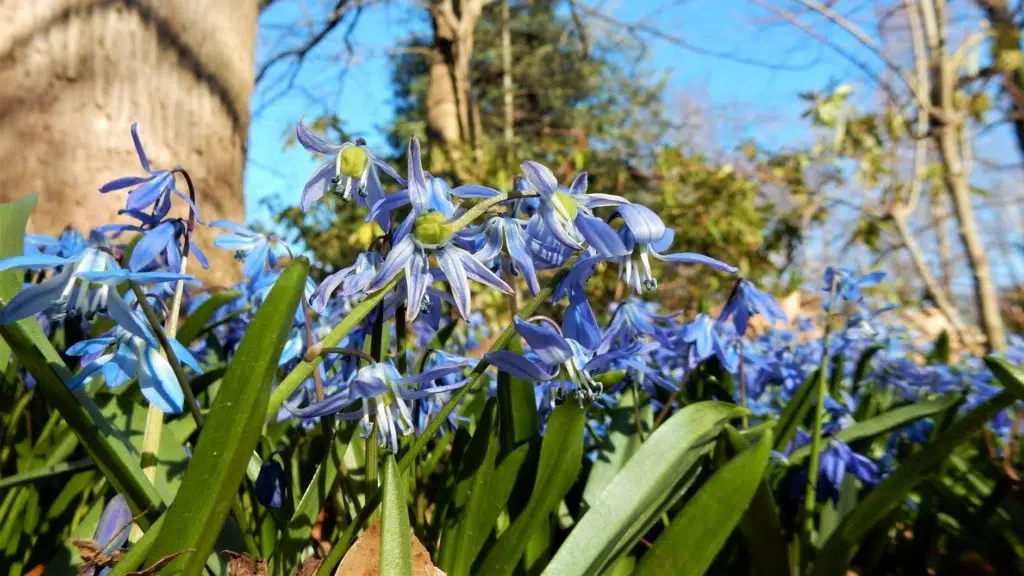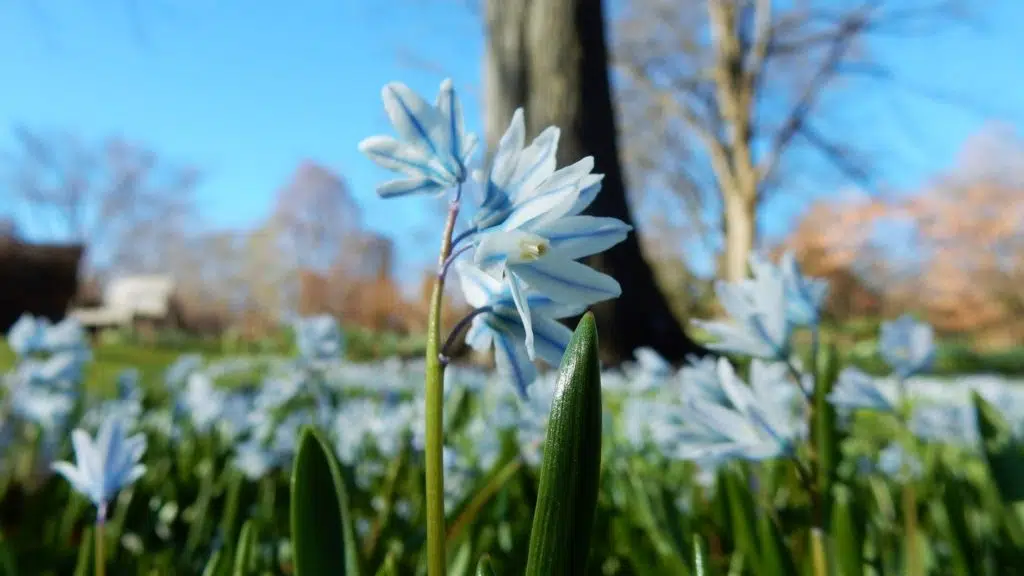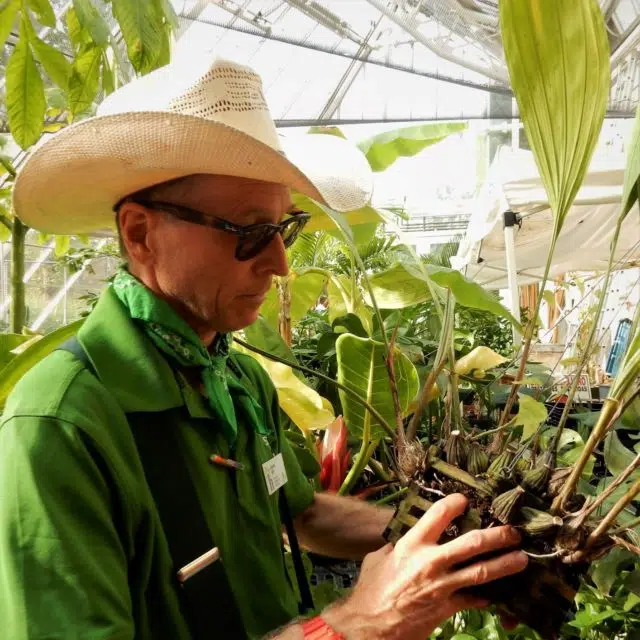
Blue. Underneath that big, blue April sky the color blue nevertheless remains a rare gift when found in nature. Due to the proscriptions and particulars of its biochemical pathways biological blue becomes a complicated—and unlikely—pigment for living systems to synthesize. Some blue organisms have side-stepped this biosynthesis by evolving miniature prismatic (or physical vs. chemical) light-sorting systems, but this is—think about it—not an easy ask, either. Certainly, even inorganic and geologic processes balk at blue.
Hence we are given flowers rife in red and yellow and purple—but where art blue? We are given but blue jays and bluebirds of blue feather. From the earth we are given lonely lapis lazuli, one of the original unobtaniums since the early turns of time. And even among us humans blue pigment at our hands was not a given until the end of the Dark Ages.
World-wide we can only claim a pauper’s poesy of blue flowers. Yet today at the Garden how lucky we are to be given three beautiful blue flowers together, blazing blue in brilliant reply to all the other colors of the world.
And in all that is the point of today’s little blog: to get acquainted through photos and words with some rare and wonderful “true-blues” in our spring Garden.

We’ll start with the familiar: a garden-variety (nothing wrong with that) hyacinth (Hyacinthus orientalis hybrids) blooming along CK Patrick Walk. In fairness, hyacinths display in colors from pink to purple to almost black. But today we have a positively blue specimen, its color conferred by a biochemical blue synthesized from an anthocyanin backbone molecule that has three hydroxyl functional groups tacked-onto one of its carbon rings (eyes glaze-over here). But this counts because the anthocyanin backbone—three carbon rings—can be yellow, red, orange or blue depending on the number of supplemental hydroxyl groups that it accrues; so it has an inherit natural flexibility of expression. And hyacinths make at-least two forms of anthocyanin, red and blue, giving natural and human hybridizers a useful palette from which to paint all those beautiful hyacinths we love. And ours here has obviously been bred to express its three-hydroxyl anthocyanin—correct? Correct!

Next comes the bluer blue of the blue squill (Scilla siberica). Our best patch, pictured here in a worm’s eye view, is at the woodland edge near the big red oak in Restorative Garden. All three of our highlighted blue flowers are bulbous plants and spring ephemerals. They also share membership in the subfamily Scilloideae. These blue squill are naturalized in the duff of the woodland border, and that’s how they work best in a horticulturally literal and emotively figurative care-free sense. Before moving on from this photo, look more closely—even the anthers are blue!

I’ve saved my favorite blue flower for last: the striped squill (Pushkinia scilloides)underneath—you guessed it—the big red oak. And its stripes are as blue as the blue spring sky! Like its kin striped squill is easy to grow, and like its kin it is (still) deer resistant. We have ours growing straight up through the lawn, transmogrifying this space into a fairy wonderland for the spring. Get down on your knees, and with a little imagination you can see the fairies dancing amongst the flowers. Horticultural courtesy only requires that let the fairies play unperturbed until May 1st, then start the mower (ask the fairies first) and cut the spent squill flowers and leaves so that the grass cab get busy re-making the space for summertime.
Blue’s natural rarity in nature’s palette makes it a special treat to find in the garden, especially when found right underfoot as we have done today. Why not grow some of these easy bulbs in your own garden? Or even easier, just come to see ours, and let nature’s blue gifts brighten your palette and lighten your spirit!

Mark Bir
Horticulturist
In his 25 years as a parks and public horticulture specialist, Mark Bir has had the chance to wear every badge from children’s naturalist to rhododendron horticulturist to glasshouse manager. He has been with the HF&G for over a decade and in his current assignment “under glass” Mark grows everything from baobabs to bananas.













